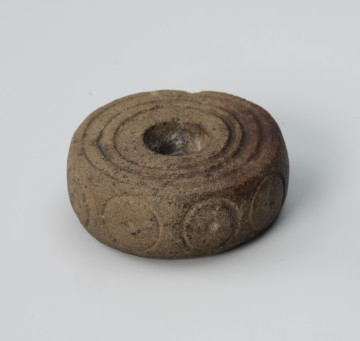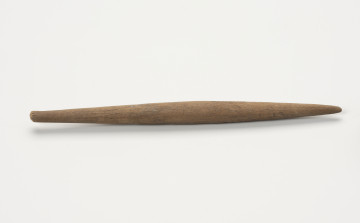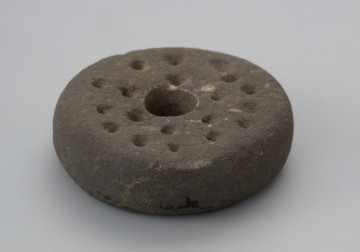
Spindle whorl
900 — 1100
National Museum in Szczecin
Part of the collection: Middle Ages
A two-cone spindle-whorl with flattened poles, made of clay with an admixture of fine-grained sand, and formed on a potter’s wheel, was discovered in 1902 by B. Kucker, a teacher from Kamień Pomorski, during amateur surface surveys at an early medieval settlement in Gardziec. This, now defunct, village can be traced in written sources as villa Gardiz. The site itself is located on the Śniatowskie Lake on a flat, sandy hill not far from a 9th -12th century fortified settlement. Between 1953 and 1954 Władysław Filipowiak (1926-2014) carried out reconnaissance surveys at the settlement, and a year later he joined Eugeniusz Cnotliwy (1938- ), Marian Sikora (1932-2005) and Ryszard Wołągiewicz (1933-1994) in excavations. In the course of investigations two large clusters of stones and fifteen utility pits were documented, from which were recovered, among other things, fragmentary clay vessels, pieces of roasters, querns, animal bones, whetstones, knives, arrowheads and objects connected with weaving - spindle-whorls. Based on the archaeological findings of the time, the settlement was dated to have persisted from 8th to 12th centuries. Grzegorz Durdyń
Author / creator
Object type
spindle whorl
Technique
modelling, coating, wypalanie
Material
clay
Origin / acquisition method
acquisition
Creation time / dating
Creation / finding place
Owner
Muzeum Narodowe w Szczecinie
Identification number
Location / status

900 — 1100
National Museum in Szczecin

701 — 1100
National Museum in Szczecin

476 — 1100
National Museum in Szczecin
DISCOVER this TOPIC
National Museum in Lublin
DISCOVER this PATH
Educational path